what are you looking for?
Categories
Latest blog
- Interactive Whiteboard: The Dynamic Pen of Educational Technology
- Do schools still use smart boards?
- What is an advertising kiosk?
- What are the merchants at the Guangzhou Export Commodities Fair?
- What is an advertising kiosk?
- How do you use an interactive panel board?
- What does an interactive board do?
- Exploring the Features and Benefits of Ultra HD Interactive Display Boards
Tags
-
What is the difference between electronic whiteboard and interactive whiteboard?May 09, 2023Both electronic whiteboards and interactive whiteboards are presentation tools used in various settings such as classrooms and boardrooms, but they differ in several ways. An electronic whiteboard, also known as a traditional whiteboard, is a simple writing surface that can be used with dry-erase markers or other writing tools. It can be used to write notes, draw diagrams, or brainstorm ideas. On the other hand, an interactive whiteboard is a more advanced version that allows users to interact with digital content using touch, a stylus, or other input devices. Interactive whiteboards feature a display that can be connected to a computer or other devices, allowing users to control and manipulate digital content, including documents, images, videos, and software applications. They also often come equipped with collaboration software that allows for sharing screens, working on documents together, and engaging in group discussions. Additionally, built-in features like sound and video recording can be used to capture and save presentations for later use. In summary, while an electronic whiteboard is a basic writing surface, an interactive whiteboard offers more advanced features that allow for greater interactivity, collaboration, and integration with digital content. Now, if your needs to use an smart board for business, you can view our products, or contact us. We have a lot of very good quality smart interactive whiteboards for business use for your to use. Email:contact@gzqunji.com WhatsApp:+8618926228134View More
-
What are the advantages of smart boards in the classroom?Aug 16, 2023With the rapid advancement of technology, smart boards have emerged as a modern educational tool in classrooms. Integrating the benefits of digital technology and traditional blackboards, smart boards offer numerous advantages for both teachers and students. This article aims to explore the advantages of smart boards for classroom, including enhanced interactivity, personalized learning, access to multimedia resources, and real-time feedback. 1.Enhanced Interactivity: Smart boards promote interactivity in the classroom by utilizing features such as touchscreen functionality, writing tools, and multi-touch capabilities. Compared to traditional blackboards, smart boards provide multiple interactive methods that allow teachers to engage students actively. Through options like handwriting, annotating, dragging, and displaying multimedia content, teachers can encourage student participation, fostering increased interest and motivation in learning. 2.Personalized Learning: One significant advantage of smart boards is their support for personalized learning. Teachers can leverage the tools and applications provided by smart boards to create personalized educational resources tailored to individual student needs and learning differences. By adjusting teaching content and methods according to students' interests, abilities, and learning styles, smart boards offer customized learning experiences that help students better understand and master knowledge. 3.Access to Multimedia Resources: Smart boards seamlessly integrate multimedia resources, including images, videos, audio, and interactive simulations. These multimedia elements provide rich visual and auditory experiences that aid students in understanding and retaining knowledge more effectively. Teachers can leverage the multimedia capabilities of smart boards to create vibrant and engaging classroom environments, sparking curiosity and motivation in students. 4.Real-Time Feedback: Smart boards facilitate real-time feedback opportunities. Students can actively engage with the smart board by participating in interactive quizzes, submitting assignments, and more. Teachers can instantly collect and assess students' learning outcomes through these real-time interactions, gaining insights into their progress and difficulties. This immediate feedback helps teachers adjust the pace and methods of instruction promptly, providing personalized guidance and support to students. 5.Digital Recording and Sharing: Smart boards enable teachers to digitally record and store classroom content. Teachers can save lecture notes, annotations, and assignment materials for later review and sharing. This digital recording and sharing method facilitates students' revision and consolidation of knowledge after class. Additionally, it promotes effective communication and collaboration between teachers, students, and parents. Smart boards serve as a powerful modern educational tool, offering numerous advantages in the classroom. They enhance interactivity, support personalized learning, provide access to multimedia resources, enable real-time feedback, and facilitate digital recording and sharing. By fully utilizing the capabilities of smart boards, educators can create engaging, interactive, and productive learning experiences that cater to the diverse needs of students.abling precise input. This technology offers high accuracy, making it popular in design and artistic applications. Now, if your needs to use an smart board for classroom, you can view our products, or contact us. We have a lot of very good quality smart interactive whiteboards for classroom use for your to use.Tags : smart boards for classroom smart boards smart interactive whiteboards interactive whiteboards smart board for classroomView More
Contact Us
 Address: 3rd Floor, B Block, No.4 Zhong Jia Zhuang West Road, Da Long Street, Panyu, Guangzhou
Address: 3rd Floor, B Block, No.4 Zhong Jia Zhuang West Road, Da Long Street, Panyu, Guangzhou Tel: +8618926228134
Tel: +8618926228134 Email: contact@gzqunji.com
Email: contact@gzqunji.com
Product List
- Dual system 65 inch interactive board for teaching with mini ops
- 75 inch six in one function interactive board price for online teaching
- Indoor 4K 3D Hologram Display Box Transparent Display transparent lcd panel display
- 98 inch HD Android interactive touch screen whiteboard LED smart board
- Wholesale 110 inch touchable smart board for classroom With Customized
- 55 65 75 86 98 110 inch touch screen smart board for online teaching
Hot Tags
Newsletter
By Subscribing to Our Mailing List You Will Always Get Latest News and Updates from Us.
© 2022 Guangzhou Elon Technology Co., Ltd . All Rights Reserved. / XML / Sitemap / News / Blog / Privacy Policy /  IPv6 network supported
IPv6 network supported
 IPv6 network supported
IPv6 network supported
leave a message
If you are interested in our products and want to know more details,please leave a message here,we will reply you as soon as we can.











